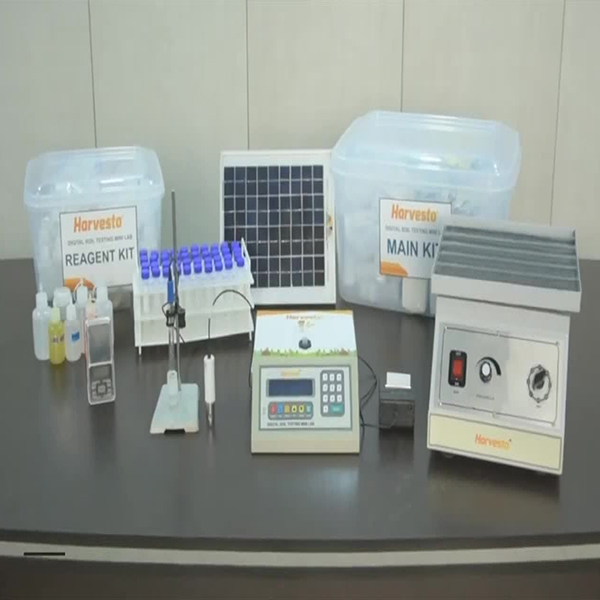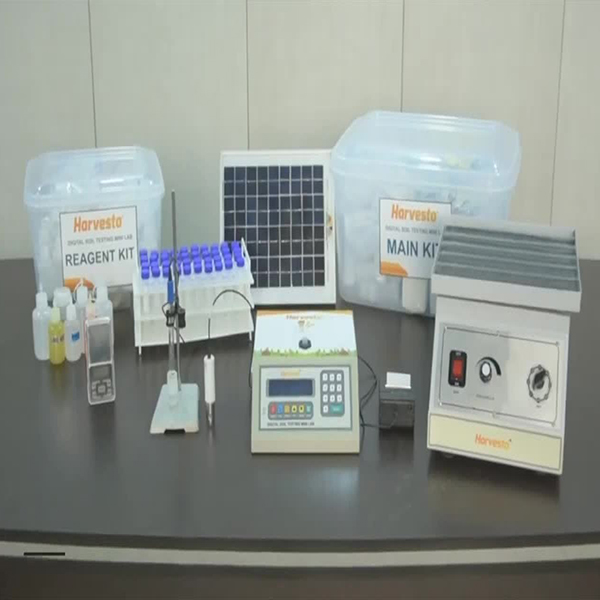Soil Testing(STFR)
Product - STFR(SOIL TESTING)
Soil Testing, also known as Soil Test for Fertility and Recommendations (STFR), is a process used to analyze the chemical, physical, and biological properties of soil. It helps determine the nutrient content, pH level, organic matter content, texture, and other characteristics of the soil. The information obtained from soil testing is crucial for making informed decisions regarding fertilizer application, soil amendments, and crop management practices.
The soil testing process typically involves the following steps:
Soil Sampling: Soil samples are collected from various locations within a field or area of interest. These samples should be representative of the entire area being tested. Sampling depth and frequency may vary depending on the crops grown and the soil management objectives.
Laboratory Analysis: The soil samples are sent to a soil testing laboratory, where they undergo a series of tests. The tests can include measuring pH, nutrient levels (such as nitrogen, phosphorus, potassium, calcium, magnesium, and others), cation exchange capacity (CEC), organic matter content, texture (proportions of sand, silt, and clay), and other relevant parameters.
Data Interpretation: The laboratory provides a report with the results of the soil tests. This report includes the measured values and often compares them to optimal or target ranges for specific crops or general soil fertility recommendations. It helps identify any nutrient deficiencies, excesses, or imbalances in the soil.
Recommendations: Based on the soil test results, the laboratory or agricultural extension services provide recommendations for soil management practices. These recommendations may include fertilizer application rates and types, lime or sulfur application for pH adjustment, organic matter management, and other suggestions to improve soil fertility and crop productivity.
Soil Testing, also known as Soil Test for Fertility and Recommendations (STFR), is a process used to analyze the chemical, physical, and biological properties of soil. It helps determine the nutrient content, pH level, organic matter content, texture, and other characteristics of the soil. The information obtained from soil testing is crucial for making informed decisions regarding fertilizer application, soil amendments, and crop management practices.
The soil testing process typically involves the following steps:
Soil Sampling: Soil samples are collected from various locations within a field or area of interest. These samples should be representative of the entire area being tested. Sampling depth and frequency may vary depending on the crops grown and the soil management objectives.
Laboratory Analysis: The soil samples are sent to a soil testing laboratory, where they undergo a series of tests. The tests can include measuring pH, nutrient levels (such as nitrogen, phosphorus, potassium, calcium, magnesium, and others), cation exchange capacity (CEC), organic matter content, texture (proportions of sand, silt, and clay), and other relevant parameters.
Data Interpretation: The laboratory provides a report with the results of the soil tests. This report includes the measured values and often compares them to optimal or target ranges for specific crops or general soil fertility recommendations. It helps identify any nutrient deficiencies, excesses, or imbalances in the soil.
Recommendations: Based on the soil test results, the laboratory or agricultural extension services provide recommendations for soil management practices. These recommendations may include fertilizer application rates and types, lime or sulfur application for pH adjustment, organic matter management, and other suggestions to improve soil fertility and crop productivity.
1 review for “Fresh Red Seedless”

Prabhat Kumar
This is test review of the product

Test
Lorem Ipsum is simply dummy text of the printing and typesetting industry. Lorem Ipsum has been the industry's standard dummy text ever since the 1500s, when an unknown printer took a galley of type and scrambled it to make a type specimen book






